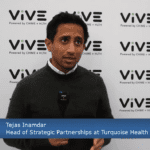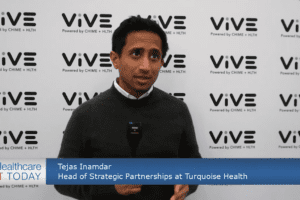Over the past year, hospitals have been engaged in a titanic struggle to care for the flood of COVID patients overflowing their facilities. For many months, excess numbers of patients died because providers couldn’t keep up with the sheer volume of the task they had at hand.
One approach they took which began to have some success was to intercept the walking well COVID patients and routing them to home monitoring rather than put them in beds needed for sicker patients. Check out Colin’s recent article for a great example of this.
In the months since then vendors are beginning to recognize that they’ve got a good thing going here. By having patients collect their own data at home, mixing it with EHR data and using AI to analyze it, you’re looking at a new and potentially more effective remote monitoring system.
These trends have come together on some commercial platforms which manage care at home on a more comprehensive basis. One recent deal is Geisinger’s adoption of a new platform designed to manage chronic diseases like diabetes, heart failure and hypertension.
The platform, called ConnectedCare365, was created by a vendor named Noteworth. According to the vendor, the platform brings together consumer collected data with EHR records, then analyzes the data with AI tools to identify ways to improve patient outcomes.
Using ConnectedCare365, patients gather their weight, blood pressure and glucose and other relevant metrics using a smartphone app. The platform then analyzes the patient-generated data and relevant information from the EHR and shares results directly with the patient’s care team.
With this analysis in hand, clinicians can triage and prioritize care for high-risk patients to avoid needless emergency department visits and hospitalizations, Geisinger and Noteworth said.
The ConnectedCare365 platform is just one of an expanding number of increasingly robust remote monitoring options to a healthcare industry which has finally decided that it wants them.
For example, another interesting approach to connecting consumer health data to EHRs comes from remote monitoring device-maker Withings, which has partnered with EHR integration software developer Redox to create a wearable that connects with a wide variety of EHR platforms.
For a while, with health plans slow to pay for remote monitoring services, it wasn’t clear when they would go mainstream. Now, though, that we’ve seen their value in the war on COVID, providers are taking on the cost of deploying remote monitoring solutions as part of doing business. (It doesn’t hurt that the vast majority of patients think remote monitoring can have a positive effect on their health.)
Things are moving *very* quickly in this sector. By the end of this year, remote monitoring-related technologies are likely to see the breakout success which has always been pending.
There is definitely still work to be done as to how to best deploy these tools and how to make the best use of the data they generate, but bottom line, their time has come.













